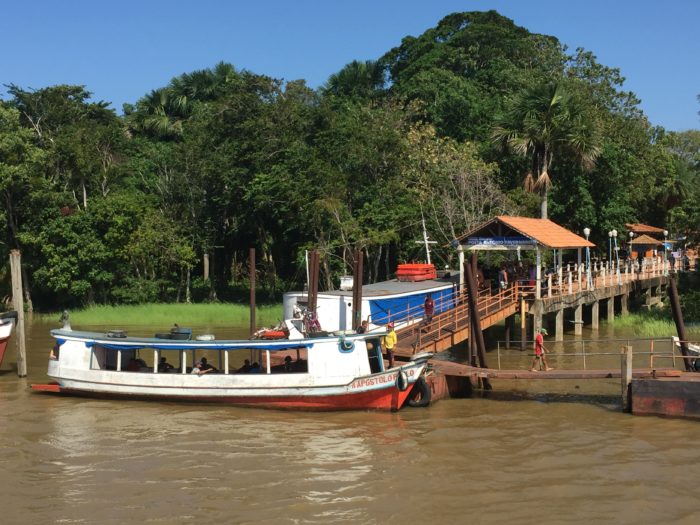If you are Brazilian, then you’ve probably heard of what we’re going to say next during geography class in high school. But a reminder is always a good idea. If you are a foreigner, no matter where you are from, this information may be new. Let’s talk about the Brazilian Amazon and how nothing really compares to the intensity of a first-hand experience in this magnificent wonder of the world.
The majority of the Amazon forest, approximately 60%, is located in Brazil. Peru has 13%, and then smaller parts of the forest are located in Colombia, Venezuela, Ecuador, Bolivia, Guyana, Suriname and French Guiana.
It’s sheer massive size holds many wonders and secrets. So the question is: what can we learn from the Brazilian Amazon?
Here is our list, speaking specifically about Belém, the capital of Pará, and Cotijuba, an island that also belongs to the municipality. Come with us!
There Isn’t Only One Amazon
The title is slightly provocative, so let’s explain what we mean. It turns out that, somebody who does not know the Amazons or any of its territories, tend to generalize it. Same thing that happens with the African continent. Sometimes people refer to “Africa” as if it were one place, disregarding differences between people, cultures and even environment.
In his book “Amazônia, Amazônias” writer Carlos Walter Gonçalvez states that the Amazons is heterogeneous, contradictory and unequal.
For this reason to really understand its diversity and experience its grandeur, it is definitely worth travelling here and seeing it firsthand. Come and connect with nature and immerse yourself in local cultures. But a single trip to this immense territory is of course not enough! It takes many. How about starting with us?
“Sailing is necessary”
Paraphrasing Fernando Pessoa, “sailing is necessary, living is not necessary.” This is the reality of the capital of Pará.
As our hostess, partner and director of the Gabiraba Station, Ana Gabriela Fontoura say “you have to understand what is the dimension of a freshwater river. A ‘river-sea’, whose size even when knowing it makes a person say: ‘wow, it is not possible that this is a river!”
And such greatness must be known, preferably through sailing!
The Amazon is not just a forest. People are at its core
Besides being diverse, the Amazons are full of tradition and culture – the forest is its setting. It is precisely for this reason that the history of the Amazonians should not be forgotten and erased. And yet this is happening. So much so that the Microsoft Program Word, does not even recognize the word “amazonidas” (Amazonian in Portuguese).
The most popularized topic about the Amazonian regions is deforestation. But the regular Brazilian does not connect with this message. Why? “As long as the Brazilian does not know the Amazon, he/she will never preserve it. And that’s very serious. ” Words from our partner Maria Teresa, who has been at the forefront of the agency “Turismo Consciente” for ten years working with responsible tours in this region.
The culture is so vivid and typical that many couples sleep in hammocks. And for them nothing is more comfortable! They only use the same bed when they want to sleep together.
Nature is present
Of course, nature is always present and manifesting itself throughout the planet. But if you live in a big metropolis, you probably only remember this when it rains or the sun shines or when the sun rises and sets. Maybe even when it is possible to see the moon in the midst of pollution?
In Belém it’s different. A close connection with natural resources is present even in the city that consumes various products. One example is fish consumption which is extremely fresh. Another example is Ver o Peso market, in Belém, where 5:00 am every day, products arrive from the islands. You can find everything from açaí to other fruits, herbs and plants here.
Culturally people still maintain the traditions of using these fruits as remedies for the most diverse diseases.
The typical gastronomy
“Many travellers say that they do not like fish, but when they try the ones from the region they say there is no way not to like it“, says Ana Gabriela. The cuisine is really very different; the fish is fresh and tasty. And for those who are worried about overfishing, the communities from the island practice subsistence farming – only for their own consumption and small-scale sale for visitors in the region.
So the question remains: are you prepared to live an experience in the Brazilian Amazon?






